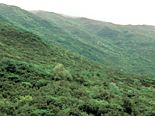NE-Sichuan (China)
At its far eastern end, the Eurasiatic mountain system reaches the warm temperate climates of
W-China. Sharp, V-shaped valleys, lined with incredibly rich deciduous forest vegetation drain
the waters from upper catchments which make a European visitor feel at home: Forests of
Picea,
Abies
and
Larix,
which reach the treeline at 3500 to 3700 m in elevation, are often replaced by
pastures, which again have genera resembling, in large part, those present on their European
counterparts. Noteworthy is the abundance of Edelweiss. The examples shown here are from the
province of Sichuan.
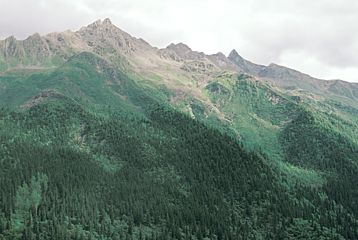
1 - The treeline at 3700 m.
1 - The treeline at 3700 m.
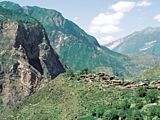
2 -
Passing mountain villages at c. 2000 m elevation remind the traveller of the
S-Alps.
2 -
Passing mountain villages at c. 2000 m elevation remind the traveller of the
S-Alps.
3 -
The shrubland near treeline at 3500 m is enormously rich in deciduous broad leaved
species (easily more than 20 species on this slope, e.g.
Quercus,
Sorbus,
Betula,
Hippophae,
Lonicera,
Crataegus,
Rosa,
Prunus,
Rhododendron,
Berberis).
5 -
A pasture near the treeline at 3600 m with species of
Veratrum,
Gnaphalium,
Polygonum,
Saussurea,
Pedicularis,
Campanula,
Geum,
Aster,
Potentilla,
Lilium,
and
Leontopodium.
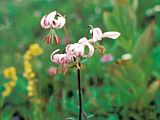
7 -
Lilium sp.
(Liliaceae) in meadows near the treeline of Sechuan, compare the S-Alps.
7 -
Lilium sp.
(Liliaceae) in meadows near the treeline of Sechuan, compare the S-Alps.
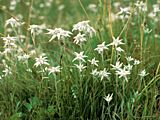
8 -
Alpine meadows with Edelweiss (
Leontopodium sp.
(Asteraceae)).
8 -
Alpine meadows with Edelweiss (
Leontopodium sp.
(Asteraceae)).



